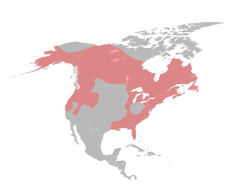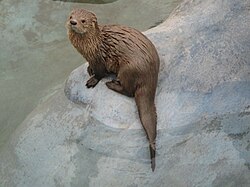| Lontra | |
|---|---|
 | |
| North American river otters (Lontra canadensis) | |
| Scientific classification | |
| Kingdom: | Animalia |
| Phylum: | Chordata |
| Class: | Mammalia |
| Order: | Carnivora |
| Family: | Mustelidae |
| Subfamily: | Lutrinae |
| Genus: | Lontra Gray, 1843 |
| Type species | |
| Lutra canadensis Gray, 1843 [1] | |
| Species | |
L. canadensis Contents | |
 | |
| Lontra range | |















